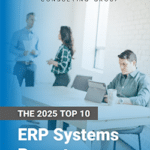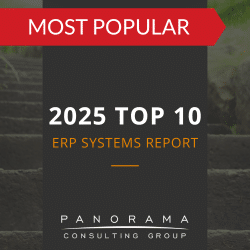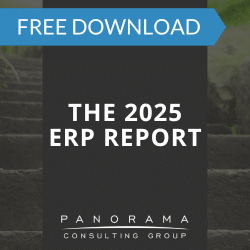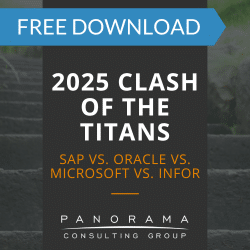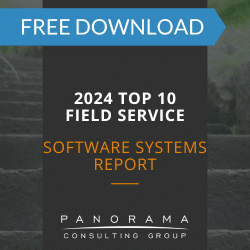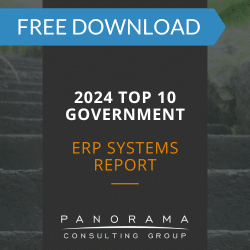- Open technology platforms are designed to scale in modules and support integration across ERP, SCM, and emerging technologies.
- Key risks include fragmented governance, overlooked vendor lock-in, and infrastructure gaps that surface as platforms scale.
- Strategic trade-offs emerge between agility and control, innovation and resilience, and openness and regulatory exposure.
- Independent ERP consultants provide critical insight and neutrality when evaluating open platforms for long-term fit and adaptability.
As digital transformation accelerates under the influence of AI, automation, and evolving customer expectations, many organizations are embracing open technology platforms as the cornerstone of their modernization strategy.
An open technology platform is a flexible foundation that makes it easier to connect different systems—like ERP, supply chain systems, and customer-facing applications—without being locked into a single vendor. Open platforms are built to scale in pieces, so businesses can add new capabilities, replace outdated systems, and integrate with partners as their needs change.
But the term “open” is often misunderstood. Today, we’ll provide a clearer view of what openness truly entails.
A Failed Payroll System Implementation
Panorama’s Expert Witness team was retained to provide a forensic analysis and written report to the court regarding the failed implementation of a major software developer’s ERP/payroll system.
Scaling an Open Platform Isn’t a Straight Line
The benefits of openness are real—but so are the structural weaknesses that emerge without strategic oversight. Many organizations move fast to connect tools, automate workflows, and build extensions—but they rarely stop to examine how that openness should be managed at scale.
Here are five challenges you’re likely to encounter as your open platform strategy matures:
1. Fragmented Governance Creates Security Gaps
When every team integrates tools independently, oversight becomes fragmented. Data flows in and out of ERP and SCM systems through APIs, cloud platforms, and third-party apps—often without centralized controls. Traditional IT boundaries no longer apply, and that expands the attack surface.
In our ERP Project Recovery engagements, we’ve seen organizations suffer compliance breakdowns, failed audits, and even production outages—all because integrations were treated as side projects rather than strategic infrastructure.
2. Prototype Success Doesn’t Guarantee Scalable Infrastructure
Open platforms often deliver quick wins in pilots or isolated business units, but that momentum can be misleading.
When you scale across manufacturing plants, countries, or partner ecosystems, architecture gaps emerge. For example, authentication and identity management can become critical points of failure in manufacturing ERP software, unless the open platform is designed from the outset to handle user roles, access controls, and data security consistently across all locations and systems.
3. Vendor Lock-In Can Still Happen—Quietly
Open platforms are often pitched as the answer to traditional vendor lock-in. However, in practice, many still depend on proprietary enhancements, partner-only connectors, or exclusive middleware. These dependencies build slowly, locking you into one ecosystem over time.
This creates real business risk when costs rise, platform agility drops, and your team becomes reliant on one vendor’s pace of innovation.
4. Vendor Marketing Often Overstates Technical Flexibility
What’s marketed as “open” isn’t always extensible. Many ERP vendors support APIs but restrict customization. Others require recertification or vendor oversight for even minor platform changes.
These constraints often don’t appear until implementation is underway, when it’s too late to change direction without incurring cost and disruption.
Our independent ERP selection consultants can uncover these gaps early by using real-world test cases during evaluation—not hypothetical feature lists.
5. Integration Sprawl Creates More Work, Not Less
As departments build their own solutions, the number of tools, connectors, and data paths multiplies.
Over time, these integrations become hard to govern, harder to troubleshoot, and nearly impossible to scale. When platform issues occur, no one knows where the failure began—or who owns the fix.
That’s why companies must treat integration standards and cross-team alignment as core governance issues, not backend IT concerns.
Strategic Trade-Offs You’ll Have to Navigate
Open platforms offer flexibility, speed, and innovation—but they shift responsibility for architecture and control to your organization.
Success requires strategic decision-making across people, processes, and platforms.
Here are five trade-offs that CEOs must address as they expand open technology strategies:
1. Agility vs. Architectural Control
Open platforms make it easy for teams to try new tools and build quick solutions. However, without a strategic plan, those additions can create confusion, duplication, and system breakdowns over time. Strong architecture is what gives agility its long-term value.
2. Speed vs. Knowledge Retention
Quick deployment is appealing—but when internal teams don’t understand how systems were built, long-term adaptability suffers. Too many implementations move forward without planning for internal upskilling or cross-functional training. Knowledge transfer must be designed into every step.
3. Innovation vs. Resilience
Encouraging teams to build their own tools fosters innovation—but also introduces fragility. When systems are loosely coupled but poorly coordinated, small changes can break mission-critical functions. Resilience requires alignment, version control, and rollback mechanisms.
4. Flexibility vs. Compliance Exposure
The more open your systems, the harder they are to police. Regulatory risk increases when sensitive ERP or SCM data flows into third-party dashboards, external data lakes, or browser-based tools. This is why compliance must be architected into openness.
5. Collaboration vs. Accountability
Open systems encourage cross-team collaboration, but without defined roles, no one owns outcomes. When issues arise, finger-pointing follows. Accountability must be clearly assigned—especially for integrations and external services that touch production environments.
Learn More About Open Technology Platform Challenges
Open platforms can create space for innovation, but only if paired with the right architecture, clear governance, and strategic vendor management.
That’s why it’s essential to work with an independent ERP system consultant who brings objectivity to every decision. They can uncover hidden constraints before implementation and avoid vendor ecosystems that quietly reintroduce lock-in.
Your future platform should be open—but it should also be intentional. Contact us for a free consultation to learn more.
